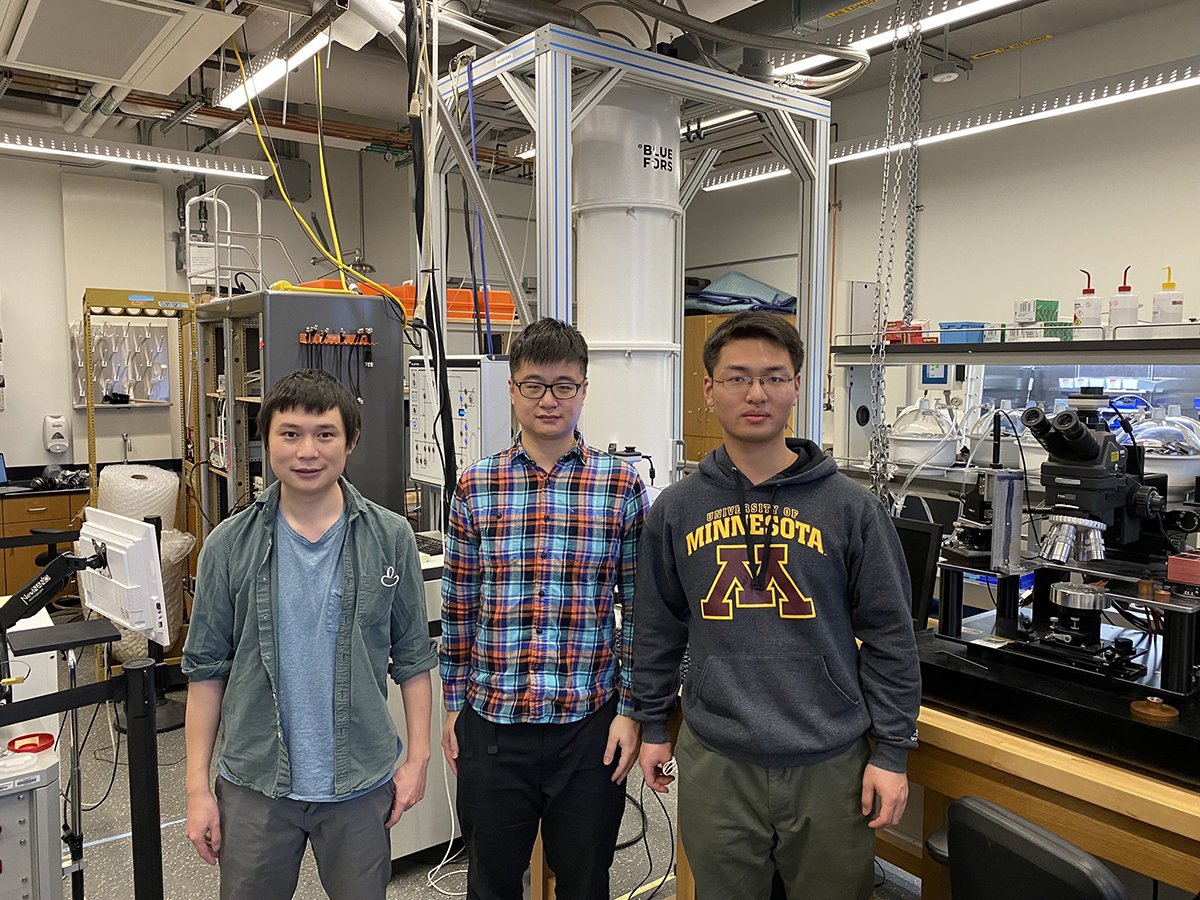Unprecedented control: Wang Group demonstrates precise manipulation of electron waves in a novel graphene microcavity

Professor Ke Wang and his students Wei Ren and Xi Zhang, from the School of Physics and Astronomy, have built novel devices that improve the ability of physicists and engineers to manipulate the flow of electrons at the nano-scale. This breakthrough will provide a new platform for studying quantum physics, and novel components for quantum electronic devices.
“An electron moving through graphene has its energy proportional to its momentum (instead of momentum squared)”, Zhang said, “When we make the device small enough–comparable to the electron wavelength, or on order of 10 - 100 nm, the linear dispersion relationship allows the electrons to be manipulated in a way similar to that of light.” The team confines electrons in a novel graphene microcavity, and electrically manipulates them into forming an interference loop via consecutive controlled reflections and refractions, similar to an advanced optical circuit. With this unprecedented level of control, the team were able to observe new quantum interference phenomena, shedding important new light on relativistic quantum physics. The novel quantum interference is further used to improve the control over the electron trajectory. “The interference is selective. Electrons that travel perfectly straight will go through the cavity with almost 100% transmission, while the electrons that go slightly astray will be reflected by the cavity.” In this way the device collimates or refines the focus of the electron beam. Ren added, “The electrons that managed to go through the microcavity are collimated to an unprecedented level, similar to that of a classical laser.”
“This is a step towards advanced quantum control of the electron trajectory“ Wang said. “The ability to selectively focus, reflect and collimate electrons will provide building blocks for novel circuit concepts based on tunable coherent interference of electron waves, towards realizing the next-generation of quantum electronics that can be implemented in computer chips.”
The group published their findings in a paper in Nature Communications. Xi Zhang, the paper’s lead author is a sixth-year Ph.D. student who will be graduating soon. Both he and his fellow student, Wei Ren, a fourth-year Ph.D.student have seen the device through various designs. Zhang and Ren learned to prepare the devices in the clean room in the Physics and Nanotechnology Building, and have helped perform the experiments through data collection and analysis. “Data analysis is the part I like the most,” Ren said, “to go through and discuss the data together.Then come up with a physics picture to interpret what we have observed.”